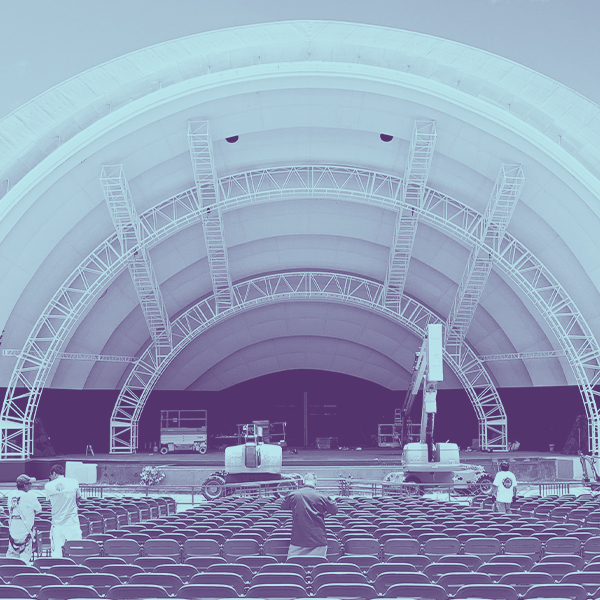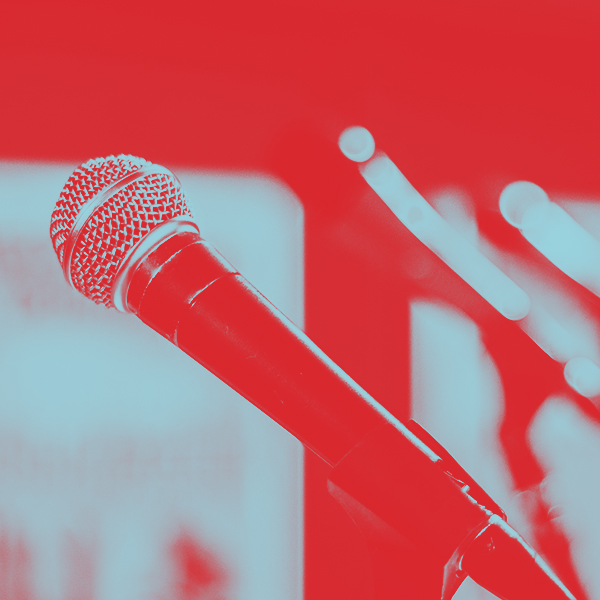After over a year of social distancing and staying safe at home, you’re probably eager to get out of the house and catch a show. We’re just as excited as you are that live entertainment is back, but that doesn’t mean that the industry isn’t still facing its fair share of challenges. This time, it’s shortages: staff, materials + rentals.
Staffing shortages
Staffing shortages is a recurring theme in pretty much every industry right now, from your favorite restaurant to grocery stores to hospitals. It seems like everyone is hiring, and many companies have had to make the tough decisions to shorten available hours, extend production + delivery timetables, and/or over burden their already burnt out teams. The same scenarios are playing out in the live entertainment world.
This is the result of a couple of different factors. First, everyone is coming off the starting blocks at the same time, so the demand for entertainment products + services is higher + more immediate than ever. That alone could quickly saturate resources, but we can’t forget the effect of the darkest days of the pandemic (for employment) where thousands of entertainment professionals found themselves out of work. Many talented + experienced people (from modelers to managers) had to find another way to pay their bills, and now, after having settled in at new jobs for over a year, they aren’t coming back. We anticipated this becoming an issue in our post from this time last year, but little could be done to combat the mass exodus until the industry could reopen. The combination of high demand for services + low availability of experienced professionals creates extremely challenging working conditions for everyone, but we’re seeing some possible solutions start to surface.
Pro tip | provide adequate lead time to your event.
We know that in our corner of the world, entertainment projects typically happen fast, but the earlier you engage your team, the better they can plan for + support your project.
Pro tip | consider creative solutions to dividing up available resources.
For example, as fabricators have gotten busier + busier, Schaefer has supported their needs by taking on three-dimensional modeling + drawing development. In other cases, the venue itself has assumed some of the design + drawing responsibilities with support from Schaefer + the installer. These methods of dividing projects have worked well, but only with excellent communication, trust, and transparency amongst the team.
Materials availability
The global supply chain is in rough shape right now, and that includes construction materials (you can read more about how we’re addressing this issue in the built world here). Though this issue is trending in the right direction, and construction materials prices that peaked earlier this year have mostly fallen + stabilized, some lessons learned from this era continue to pay dividends.
Pro tip | it’s important for the engineer + design team to communicate with project management + purchasing early to avoid specifying materials that may cause scheduling challenges during construction.
Pro tip | since the fabricator + technical designer are often the same company, it can be most economical to utilize what’s already in stock.
Pro tip | use methods + materials that a fabricator is most comfortable with to allow them to work most efficiently.
As my client partners are surely tired of hearing me say, I don’t need to reinvent the wheel. If what they are most prepared to do works, then it’s in the project’s best interests to use those materials + methods. For example, by talking to a client about their preferences and the available skills of their staff, I learned that their shop is right down the hall from the final installation location. In most cases, it’s preferable to avoid field welding, but in this case, field welding is easy!
Production equipment availability
Mobile stages + custom temporary stage providers were fully booked from May all the way through mid-October due to extraordinary demand for concerts + festivals. Though back-to-back bookings have always been common, the providers of these systems are facing local labor shortages at install locations and are having to work with crews that could be as small as half of their requested number. This means that load in + load out take longer because there simply aren’t enough hands to build at the pace that used to be typical. In some cases, this means that weekly bookings may not be possible because there isn’t enough time to get the show loaded out, driven to the next location, and loaded back in on time for tech.
Pro tip | consider designing simplified structures with a focus on prefabricated elements so that they can be assembled on site faster and with fewer people.
Though we don’t know what next year holds, the entertainment industry has come a long way from March 2020 and we’re excited for the opportunity to look back again at this time next year and see the progress that we’ve all made towards addressing these challenges. Creativity, collaboration + efficiency have always been a part of Schaefer’s culture, and has only become more critical in helping our clients bring live performances back to our communities.




